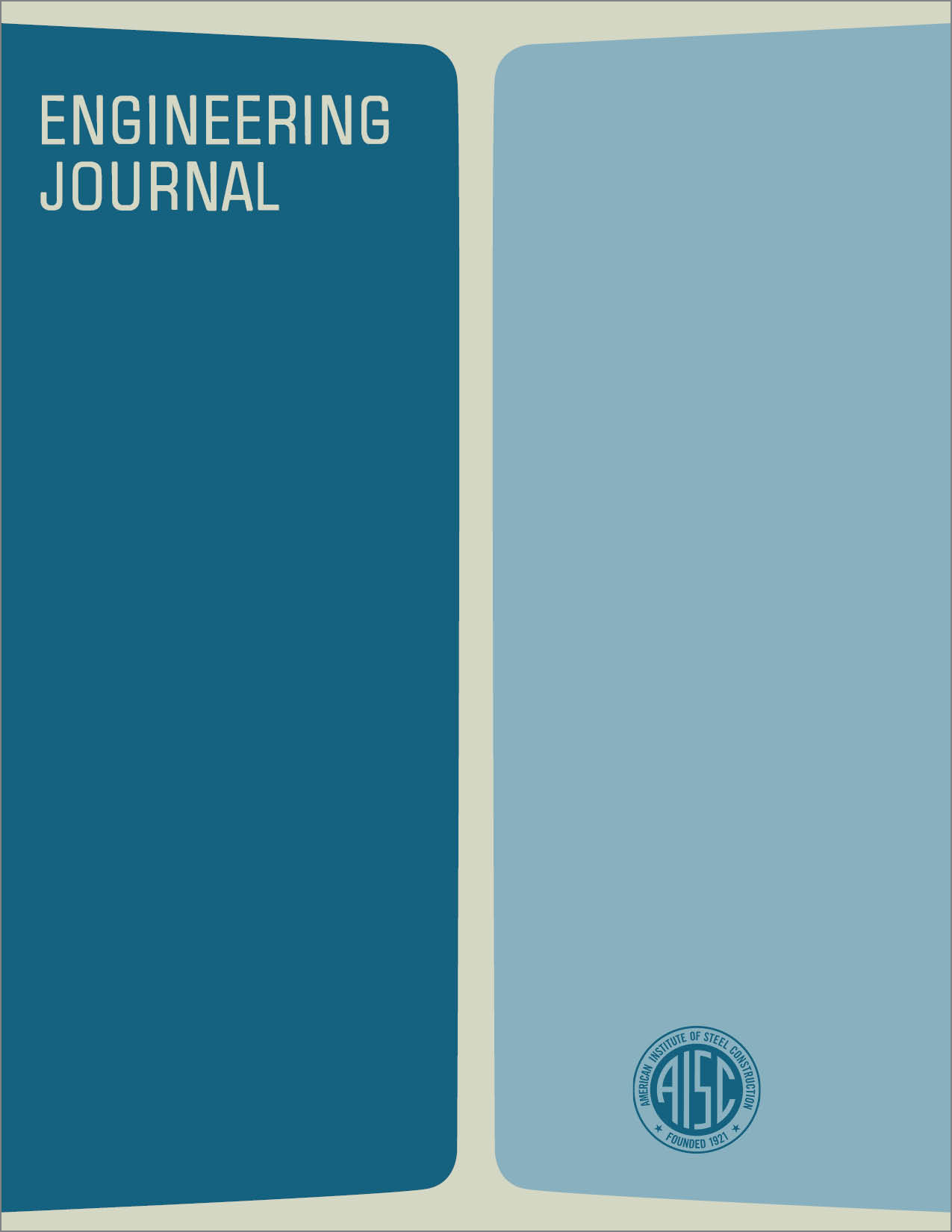Simplified High-Rise Drift Analysis and Optimized Adjustment
DOI:
https://doi.org/10.62913/engj.v9i2.184Abstract
This paper introduces a method by which drift and material-optimized drift adjustments for high-rise steel frames can be closely estimated in only a few minutes, using just simple desk calculator equipment. This simplified method had originally been developed to provide quick and reasonably close estimates of drift amplitudes for preliminary design only; yet, comparisons with the results of "exact" methods show a remarkable degree of agreement. The method evolved from the recognition of certain predictable patterns found in the study of numerous high-rise steel building frames. Evaluation of a wide variety of frame data showed that, in high-rise steel bents, under the type of wind loading required by major building codes, the distribution of material properties over the height of the bent (such as column stiffnesses, girder stiffnesses, crosssectional areas of members, etc.) could be expressed by "homogenized" mathematical expressions with excellent accuracy. Slight idealizations in the wind loading pattern and the frame grid system did not create any meaningful deviations from this accuracy.

